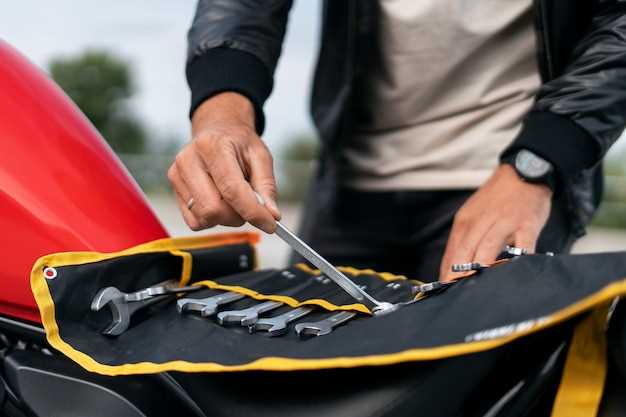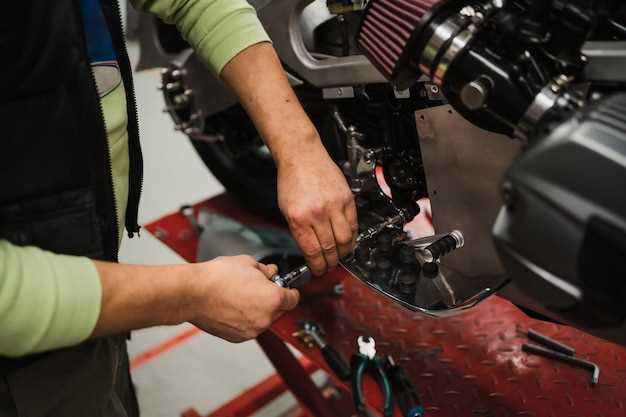
If you’re a motorcycle enthusiast looking to enhance your ride’s performance, understanding the principles of tuning is essential. With the right modifications and adjustments, you can unlock the true potential of your machine. This article explores practical tips and techniques designed to help you maximize your motorcycle’s power output, ensuring a more exhilarating experience on the road.
Tuning a motorcycle involves fine-tuning various components to achieve optimal performance. This can range from adjusting the fuel-to-air ratio to upgrading the exhaust system. Each modification plays a crucial role in the overall efficiency and power of your bike. By following the right tuning strategies, you can not only increase horsepower but also improve torque and throttle response.
In this guide, we’ll delve into specific areas that can be optimized for peak performance. These include engine modifications, suspension adjustments, and electronic tuning. Whether you’re a seasoned rider or a newcomer to the world of motorcycle tuning, the following tips will equip you with the knowledge needed to elevate your bike’s performance to the next level.
Upgrade Exhaust System for Enhanced Performance

Upgrading the exhaust system is one of the most effective ways to enhance your motorcycle’s performance. A high-performance exhaust allows for better exhaust flow, reducing back pressure and enabling the engine to breathe more freely. This increased airflow can lead to significant improvements in power and torque, especially at higher RPMs.
When selecting an exhaust system, consider materials such as stainless steel or titanium, which offer durability and weight savings compared to stock options. A lighter exhaust reduces the overall weight of the motorcycle, improving handling and acceleration. Additionally, look for systems designed to optimize specific performance gains for your bike’s engine configuration.
The design of the exhaust system also plays a crucial role. A full system, which replaces the headers and mufflers, typically provides the best performance results compared to slip-on options that only modify the muffler. Consider systems that are specifically tuned for your motorcycle model to ensure compatibility and maximum efficiency.
Installation of an upgraded exhaust may require re-mapping the motorcycle’s ECU to optimize fuel delivery, ensuring that the engine runs efficiently with the new exhaust setup. This tuning process can further enhance performance gains, making the most of the modifications.
Finally, while performance is essential, don’t overlook sound. A well-designed exhaust system can provide a deep and resonant tone that enhances the riding experience without being excessively loud or disruptive. Choosing an exhaust that balances performance and sound quality will contribute to an enjoyable ride.
Optimize Fuel Delivery Through Jetting Adjustments
Optimizing fuel delivery is crucial for maximizing motorcycle power, and making the right jetting adjustments can significantly enhance engine performance. Jetting refers to the process of selecting the appropriate size of the main jet, pilot jet, and needle position in the carburetor, which together determine the air-fuel mixture entering the combustion chamber.
Start by understanding the current jetting configuration. Refer to the motorcycle’s manual or previous tuning records to determine stock jet sizes. This baseline will help you make informed adjustments.
Next, consider the factors influencing jetting changes, such as altitude, temperature, and modifications made to the engine. Higher altitudes typically require leaner jets due to decreased air density, while changes like upgraded exhaust systems or air filters may necessitate richer mixtures to maintain optimal performance.
To adjust the main jet, start with the size that corresponds to your current setup, then gradually increase or decrease the jet size based on performance feedback. If the throttle response is sluggish or there’s a lack of power at high RPMs, a larger main jet may be needed. Conversely, if the engine exhibits hesitation or backfiring, consider reducing jet size.
Pilot jet adjustments also play a critical role in low to mid-range throttle response. When tuning for optimal low-end power, ensure that the pilot jet is not too lean, as this can lead to poor idling and starting issues. Replacing with a larger pilot jet can enhance responsiveness, especially if modifications have increased airflow through the engine.
Needle position affects mid-range throttle performance. Adjusting the needle clip position can change the angle at which the needle begins to restrict fuel flow. Raising the needle (moving the clip down) allows more fuel, beneficial for richening the mixture during mid-range operation. Lowering the needle can help if you experience richness in that range.
Once adjustments are made, conduct test rides while paying attention to throttle response, acceleration, and engine temperature. Fine-tuning may be required; small changes can lead to significant performance improvements. Finally, ensure that any changes made align with local emissions regulations, as overly rich mixtures can lead to excessive pollution.
In summary, optimizing fuel delivery through precise jetting adjustments can boost motorcycle power and enhance overall riding experience. Mastering this aspect of tuning allows for a more personalized and efficient performance, tailored to your bike’s specific needs.
Adjust Suspension Settings for Better Power Transfer

Optimizing your motorcycle’s suspension settings is crucial for maximizing power transfer from the engine to the road. Proper suspension adjustments can enhance traction, stability, and handling, allowing for a more efficient use of power. Begin by adjusting the preload on the front and rear suspension. This adjustment sets the initial tension on the springs, which can affect ride height and weight distribution.
Next, consider the compression and rebound damping settings. Compression damping controls how quickly the suspension compresses under load, while rebound damping affects how fast it returns. Ideally, you want a balance that allows the wheels to remain in contact with the ground during acceleration and braking, ensuring optimal grip. Too soft may lead to excessive sag, whereas too stiff can result in overwhelming jostling and loss of control.
Use the motorcycle’s manual as a reference for baseline settings, but remember that personal riding style and specific conditions can dictate necessary changes. Experiment with small adjustments, test riding after each change to gauge improvement in power transfer and handling. Measuring the motorcycle’s stance is also beneficial; a level bike can enhance grip and reduce unwanted weight shifts, contributing positively to acceleration.
Finally, don’t neglect the tire pressure, as it works in conjunction with suspension. Properly inflated tires enhance surface contact and grip, which combined with optimal suspension settings ensures power is effectively transferred to the ground. A well-tuned suspension not only maximizes power efficiency but also improves the overall riding experience, making your motorcycle more responsive and enjoyable.

